
Emotion and Education in Art with Taraneh Hemami
Where can you find blood-drawn heat maps, broken glass prayer rugs, and beaded governmental posters besides the archives of SF based Iranian artist Taraneh Hemami? Her simultaneously emotive and educative artworks have been exhibited across the Middle East, Europe, America, and Wikipedia. Our favorite thing about Taraneh, besides her amazing art, is the fact that she puts on other Iranian artists in her shows, actively seeking out conversation and building community. Her latest work is focused on calling attention to an archive of Iranian dissent found in Berkeley. With the help of our right hand gal Reya Sehgal, we had an awesome conversation with Taraneh about her current projects and the role of education and emotion in arts:
B: In your exhibits representing history through memorials, what’s the connection between the historical content and the memorial medium?
TH: A few years ago, I came across a collection of books and publications belonging to the Iranian Students Association which was active in the Bay Area in 60s to early 80s- and entire library of rare publications of the Iranian Leftist movement as well as an array of zines and monthly journals published locally. The material had been in boxes in a basement, collecting dust and suffering from occasion water damage. More than anything in recent years, this archive shifted my focus. The next few years and through a few residencies I was able to bring a number of people together- artists, writers, scholars to organize the material to entice an acquirement by the Library of Congress. The process became an amazing experience for me- raising my curiosity to know more about this particular history.
I began feeling the need to make the archive physical once the books were finally shipped to the Library of Congress and some ways inaccessible again- at least for the time being. Making a series based on the graphic imagery of the publications- from photographs to logos- from newspaper headlines to slogans. I have used beads to remake a series of portraits of young revolutionaries executed before and after the revolution. Evoking rosaries and prayer in the making process, with the craftsmanship of carpet weaving to create a tribute to people who lost their life for what they believed. I have also been using a series of bookcovers, theory books of the revolutionary group Fadaiian, using broken glass and glass grits. They become memorials of a specific time and history. But to me another important aspect of making is to create open ended projects that evolve and are not static in their presentations or interaction with the viewer. These object will be presented as merchandise- in every size and material- in a pop-up bazaar. I have also invited a number of artists to engage with the material and the history- creating souvenirs of this hidden history. The project will be presented in a exhibition called Fabrications at Southern Exposure this coming fall. I see the project as a way of revisiting history while inviting critical and creative dialogue.
B: The care and hand that is evident in your work lends an emotional power that gives your work a unique educational value compared to “the news.” As a professor at CCA yourself, how do you see the educational value of art and use it in your own work?
TH: Generally, I see a large part of my work as collecting material to fill in gaps in understanding as I discover information and share it through my projects. The next step of my archive project is collecting narratives from past members of the revolutionary movement and Iranian student organization who still live in Bay Area.
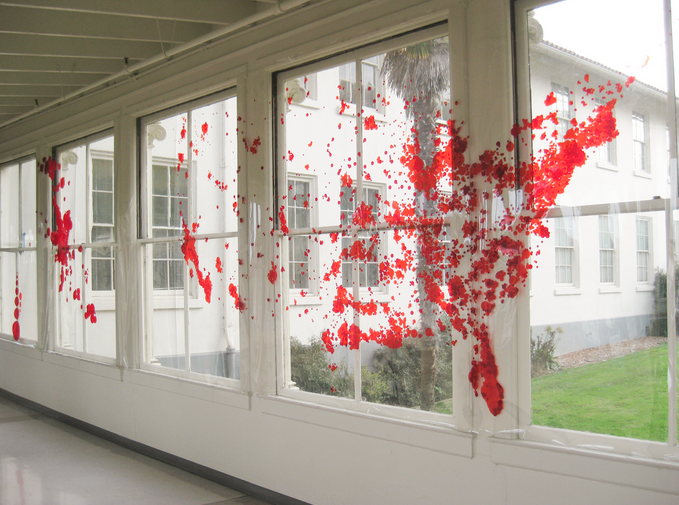
Bullet Points – a datamap comparing civilian casualties in Iraq and Afghanistan and gun violence in U.S.
B: Given that your work sometimes depicts explicitly Iranian subject matter, how do you feel that your work has been represented in the U.S.?
B: More than one of your exhibitions have involved a group show aspect that you’ve curated such as Theory of Survival at YBCA’s BAN5 and MOST WANTED at The Lab. How has community building become part of your work?
TH: A number of my projects have involved many, including artists, writers and scholars, with the goal of creating a dialog and a sense of community. At times this aspect of the project has been the most important one for me. Through the process of working collectively, we have created exchanges amongst the participants while engaging a larger community. The hunger for a sense of community has been evident by the large numbers that visit the exhibitions and participate in the readings, performances and other events curated around each exhibit. I’m excited about the Cultures of Iranian Diaspora Conference which creates another chance for us to gather and share our works. I am hoping that these opportunities will be more sustainable through the efforts of Persis Karim and the Center for Persian Studies at SJSU.
B: Any teasers for what we can expect from your Arts panel in the Cultures of Iranian Diaspora Conference this Saturday?
TH: Our panel features five amazing California based Iranian artists, including Ali Dadgar, Sanaz Mazinani, Amitis Motevalli, Samira Yamin, each with a unique relationship to Iran and varied diasporic experiences. Our works are very different from one another, while we share common histories and sensibilities. I am very excited to have this amazing opportunity and look froward to learning more about the works of this intergenerational group of artists. Hope you can join us!
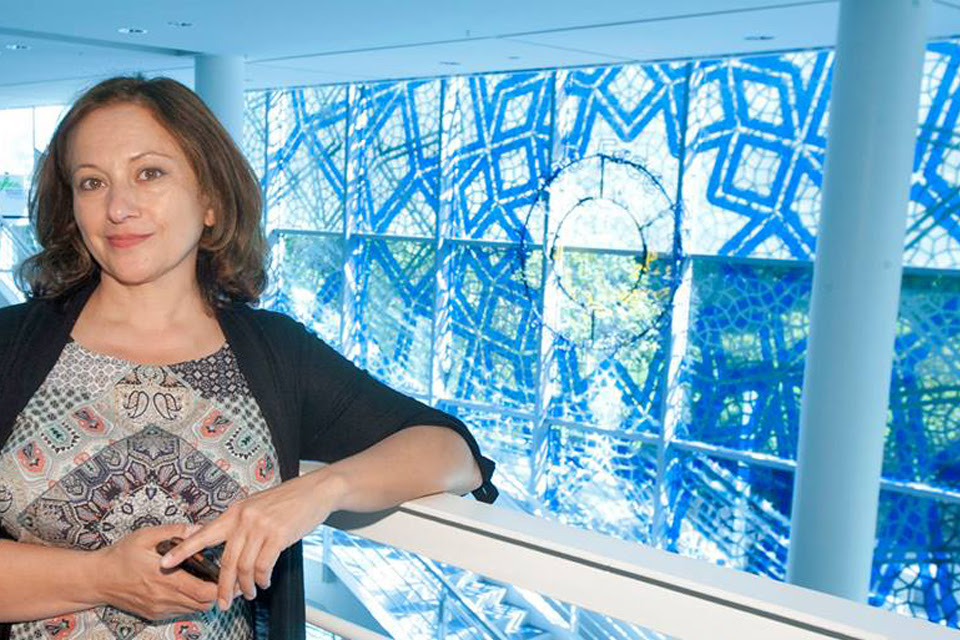
Buy Tickets to see Taraneh Hemami & friends at the CIDC this weekend –>
photos from taranehhemami.com
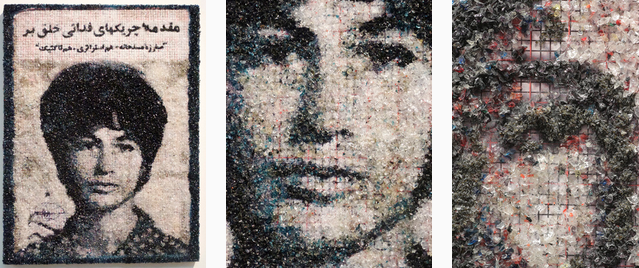

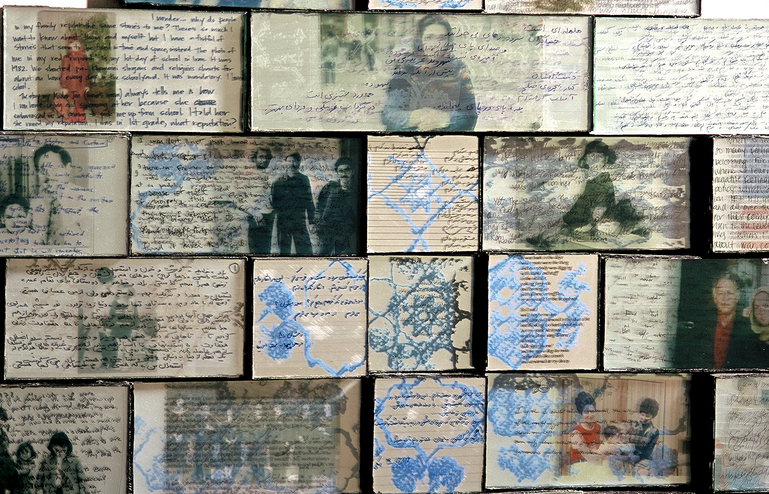
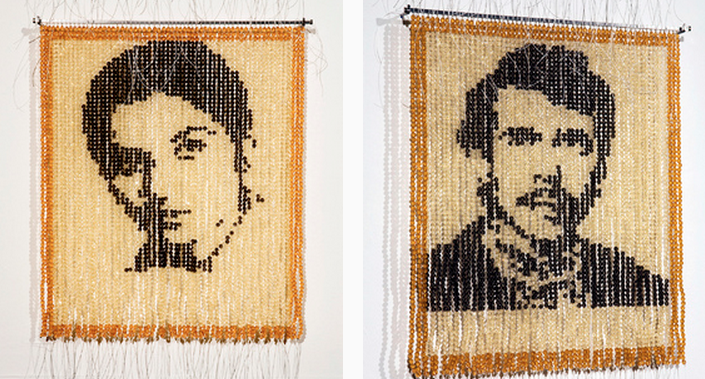
I absolutely ADORE her work…and not in the ‘oh, it’s so cute how she narrates the struggle’ kind of way. Her art is the perfect mix of captivating and disturbing and beautiful.